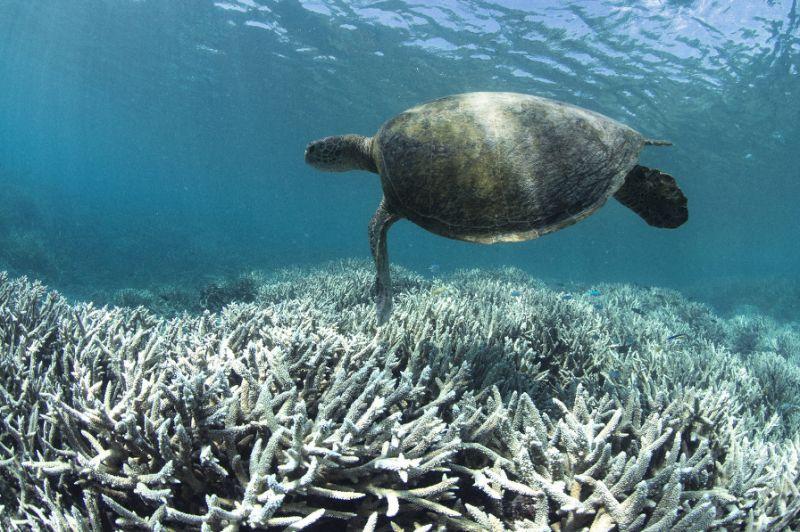Great ‘Burial’ Reef
The 500,000-year-old Great Barrier Reef is nearing death due to mass coral bleaching.
This past spring, the Great Barrier Reef, located off the Queensland Coast of Australia, was hit with a mass coral bleaching, leaving the reef to struggle the following months. Consisting of 2,900 individual reef systems and 900 islands that stretch over 2,600 kilometers (1,612 miles), the Great Barrier Reef is the largest reef system in the world. It’s the home of over 30 species of whales, dolphins and porpoises, 215 species of birds and 1,500 species of fish, or roughly 10 percent of the world’s fish species.
This predominant ecosystem has grown over the past 500,000 years. Only within the last few decades, coral bleaching has been recorded. The significance of coral bleaching is so superior that it may be the cause of death for the Great Barrier Reef.
Coral bleaching is a reaction that occurs due to the stress that the coral experiences when there is a change in water temperature, light or nutrients. When any of those variables stray away from their normality, the corals expel the algae that lives in their tissues.
The microscopic algae, zooxanthella, have a symbiotic relationship with the corals. The coral feeds off the carbon dioxide that the algae produced during photosynthesis and the algae is able to live within the coral’s tissues. The vibrant colors of coral come from the algae that lives within it; therefore, when coral bleaching occurs and the algae leaves, the coral loses its color. This doesn’t mean the coral is dead, but it does mean that the coral is more prone to disease and will starve to death if the algae is unable to be reabsorbed.
The coral bleaching that has occurred in the Great Barrier Reef was caused from the phenomenon El Niño, climate change and human flaws.
The weakened trade winds seen during the recent strong El Niño events slow the push of cooler water from the east Pacific, thus leading to warming in the west Pacific. Trade winds allow for a rotation of the water, which brings new nutrients to the surface. When they are not as strong, the rotations that are a part of the upwelling process are unable to bring up the nutrients that are needed, Wayne Rossiter the assistant professor of biology at Waynesburg University explained.
“Although we can’t control the trade winds, we can control the increase of sediment runoff that has occurred,” Rossiter said.
Rossiter explains that the countries that are still developing have experienced an increase in sediment runoff. The change of the land and industrialization have caused for more runoff to occur, which throws off the water’s pH. Over the years, rivers have been channelized which has allowed for more freshwater to flow into the oceans than ever before. Both the sediment and freshwater increase has caused for the normal conditions of the ocean to fluctuate.
Roughly six months after the event, many corals have died in the northern third of the reef. Many of these corals have died quickly, but most have died a slow death due to starvation and spread of disease. The bleaching was most severe in the northern 700 km (434 miles) of the reef and it has faced the most devastation. The southern half was lightly bleached and holds the hope of a brighter future.
“On the reefs, we surveyed close to Lizard Island, the amount of live coral covering the reef has fallen from around 40 percent in March, to under five percent now,” Dr. Andrew Hoey, a scientist working on the data collection near Lizard Island stated.
The amount of damage that has occurred over the last few months is a true testament to the significance that coral bleaching has. To some, this may not seem to be a big deal, but coral reefs are of great importance to both wet and dry ecosystems. While coral reefs make up one percent of the earth’s underwater ecosystems, they shelter roughly 25 percent of marine species, protect shorelines, support fishing industries and could possibly house the next medical breakthrough. Losing the world’s largest coral reef would not only affect the ocean, but humans as well.













